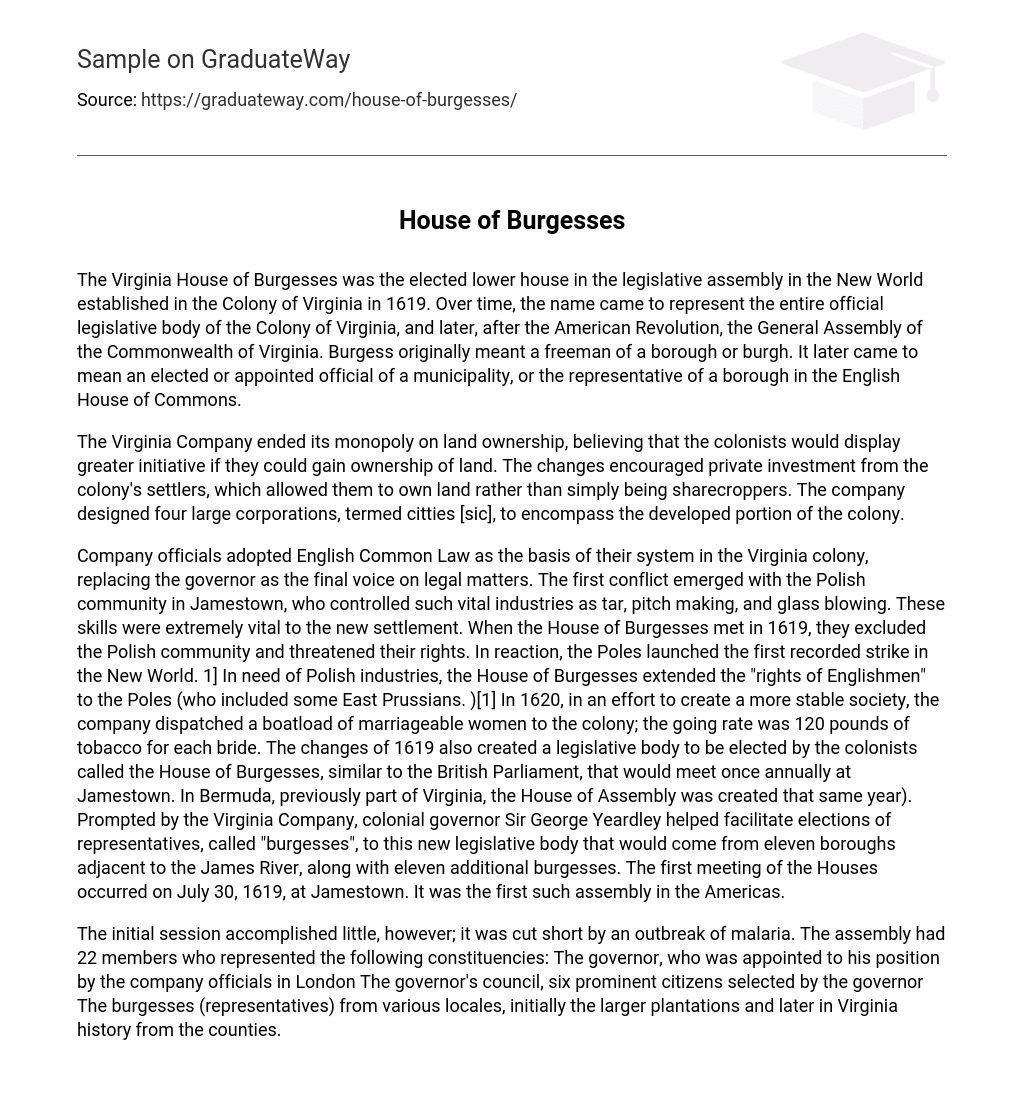The Virginia House of Burgesses was the elected lower house in the legislative assembly in the New World established in the Colony of Virginia in 1619. Over time, the name came to represent the entire official legislative body of the Colony of Virginia, and later, after the American Revolution, the General Assembly of the Commonwealth of Virginia. Burgess originally meant a freeman of a borough or burgh. It later came to mean an elected or appointed official of a municipality, or the representative of a borough in the English House of Commons.
The Virginia Company ended its monopoly on land ownership, believing that the colonists would display greater initiative if they could gain ownership of land. The changes encouraged private investment from the colony’s settlers, which allowed them to own land rather than simply being sharecroppers. The company designed four large corporations, termed citties [sic], to encompass the developed portion of the colony.
Company officials adopted English Common Law as the basis of their system in the Virginia colony, replacing the governor as the final voice on legal matters. The first conflict emerged with the Polish community in Jamestown, who controlled such vital industries as tar, pitch making, and glass blowing. These skills were extremely vital to the new settlement. When the House of Burgesses met in 1619, they excluded the Polish community and threatened their rights. In reaction, the Poles launched the first recorded strike in the New World. 1] In need of Polish industries, the House of Burgesses extended the “rights of Englishmen” to the Poles (who included some East Prussians. )[1] In 1620, in an effort to create a more stable society, the company dispatched a boatload of marriageable women to the colony; the going rate was 120 pounds of tobacco for each bride. The changes of 1619 also created a legislative body to be elected by the colonists called the House of Burgesses, similar to the British Parliament, that would meet once annually at Jamestown. In Bermuda, previously part of Virginia, the House of Assembly was created that same year). Prompted by the Virginia Company, colonial governor Sir George Yeardley helped facilitate elections of representatives, called “burgesses”, to this new legislative body that would come from eleven boroughs adjacent to the James River, along with eleven additional burgesses. The first meeting of the Houses occurred on July 30, 1619, at Jamestown. It was the first such assembly in the Americas.
The initial session accomplished little, however; it was cut short by an outbreak of malaria. The assembly had 22 members who represented the following constituencies: The governor, who was appointed to his position by the company officials in London The governor’s council, six prominent citizens selected by the governor The burgesses (representatives) from various locales, initially the larger plantations and later in Virginia history from the counties.





